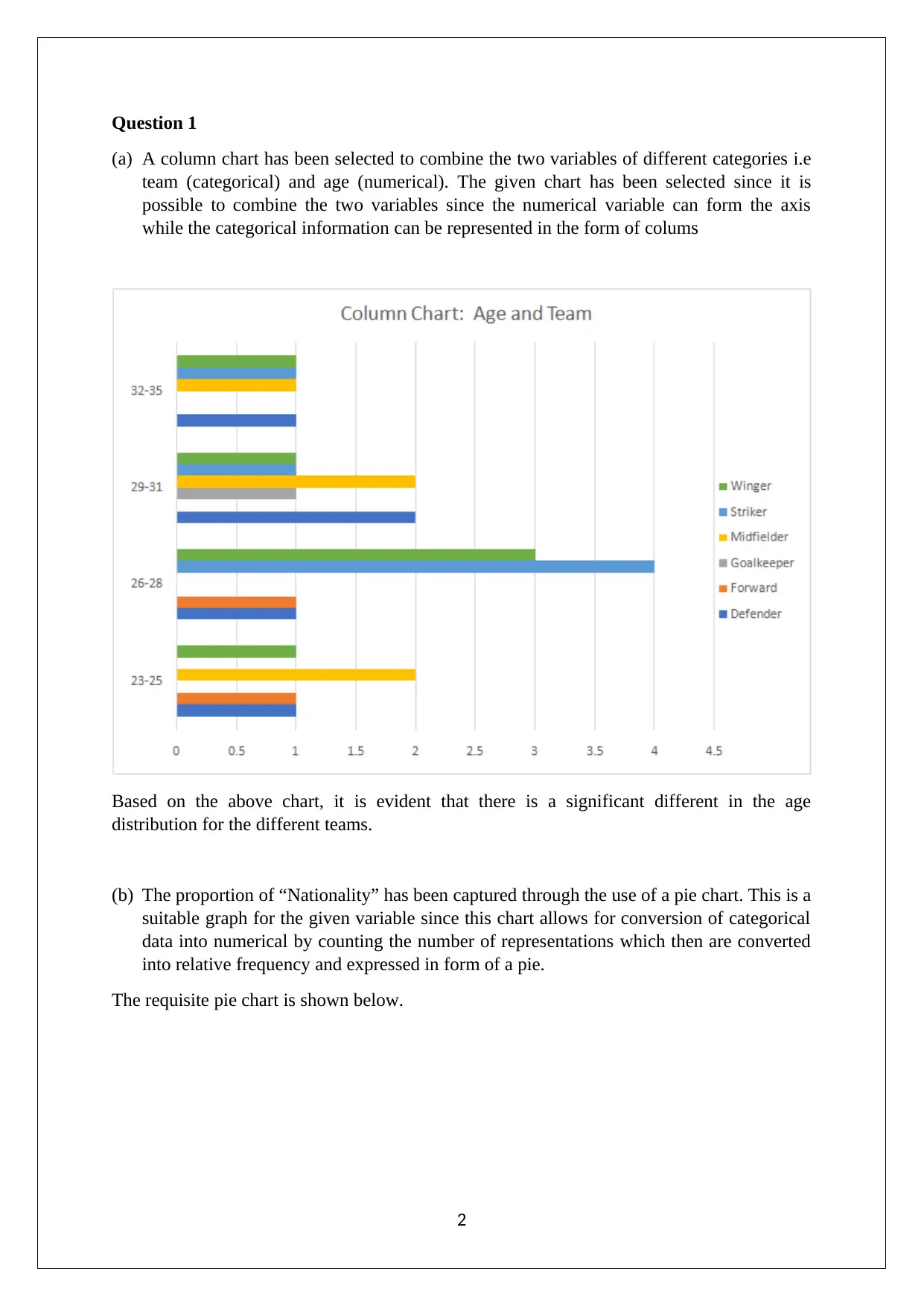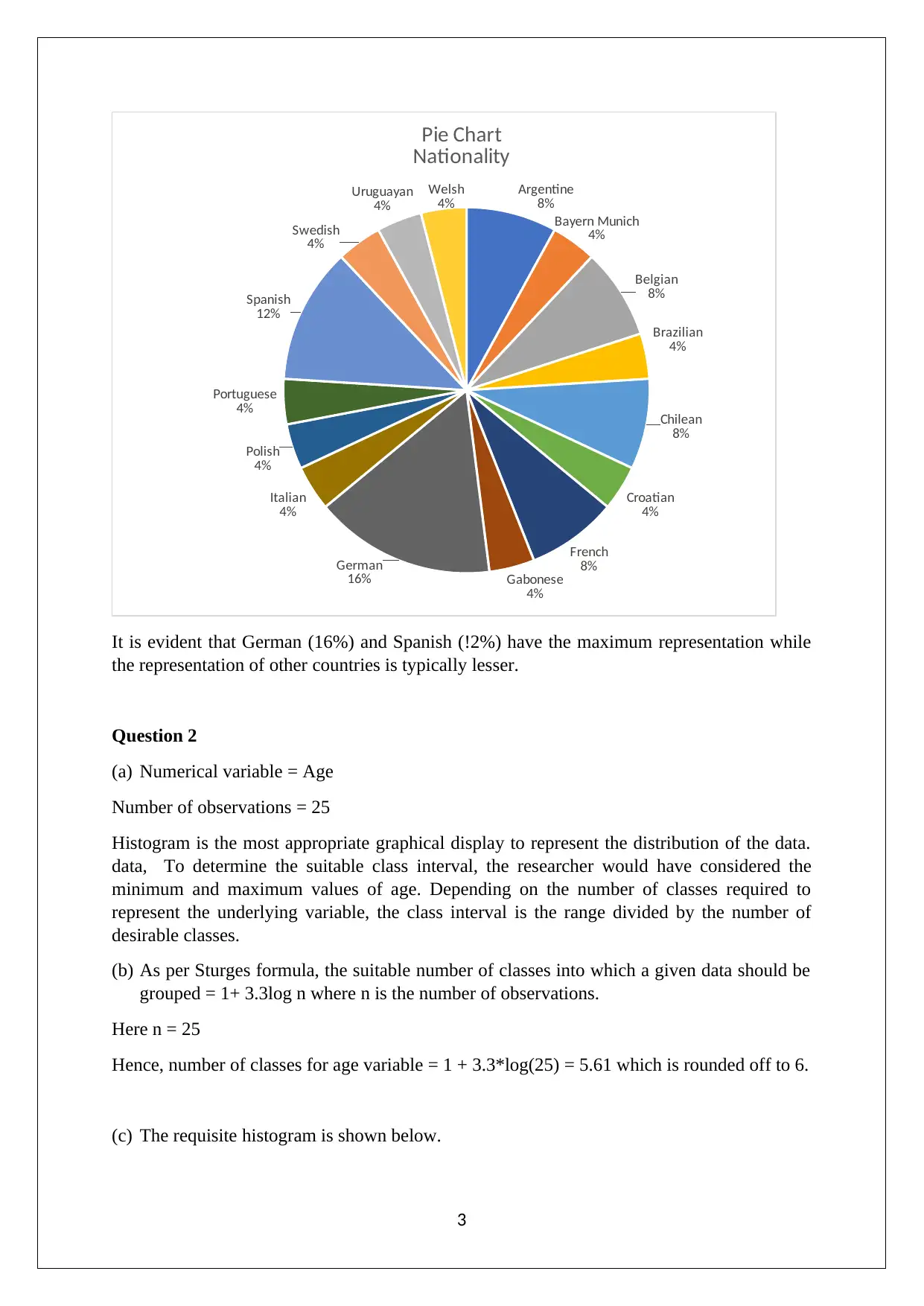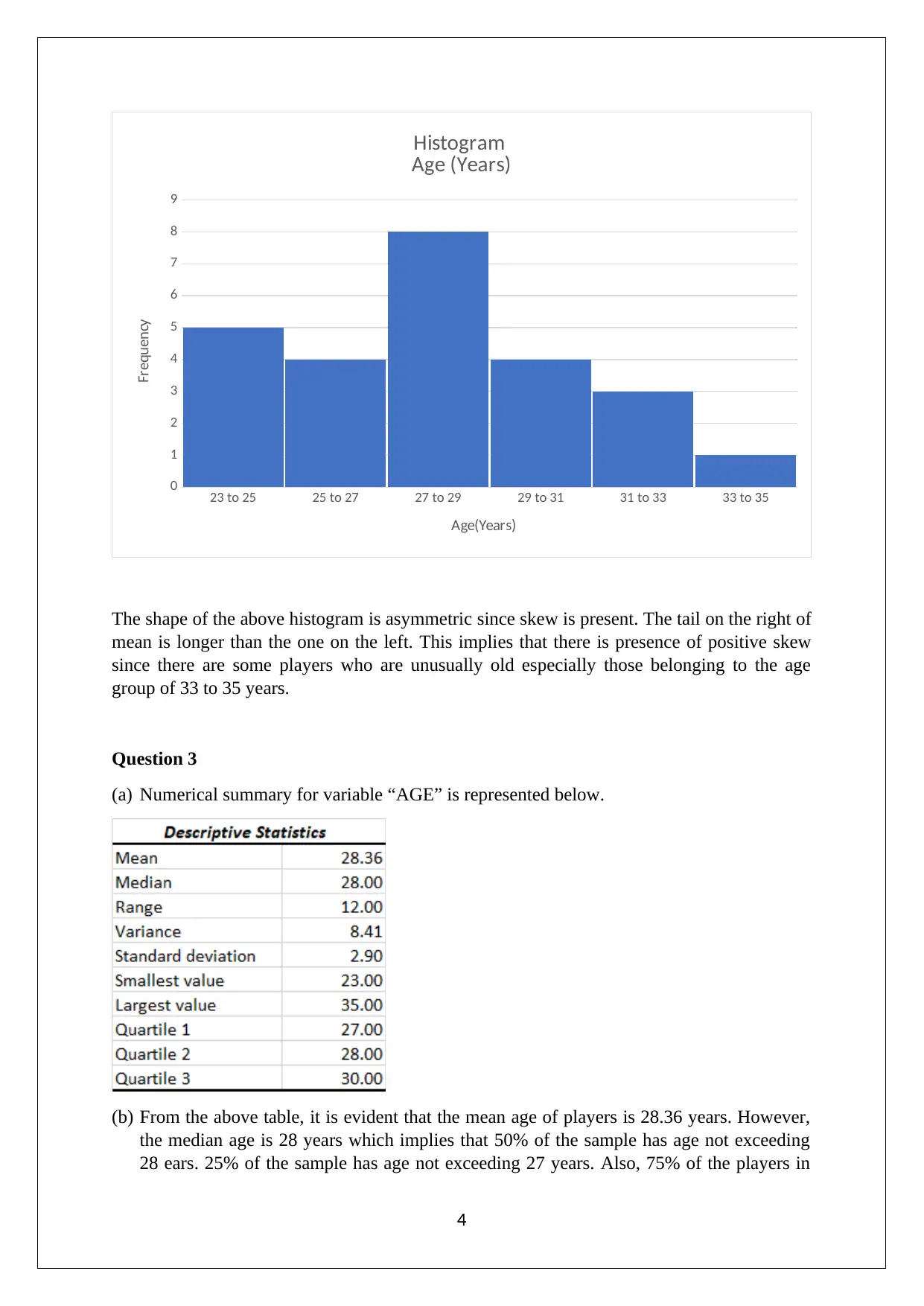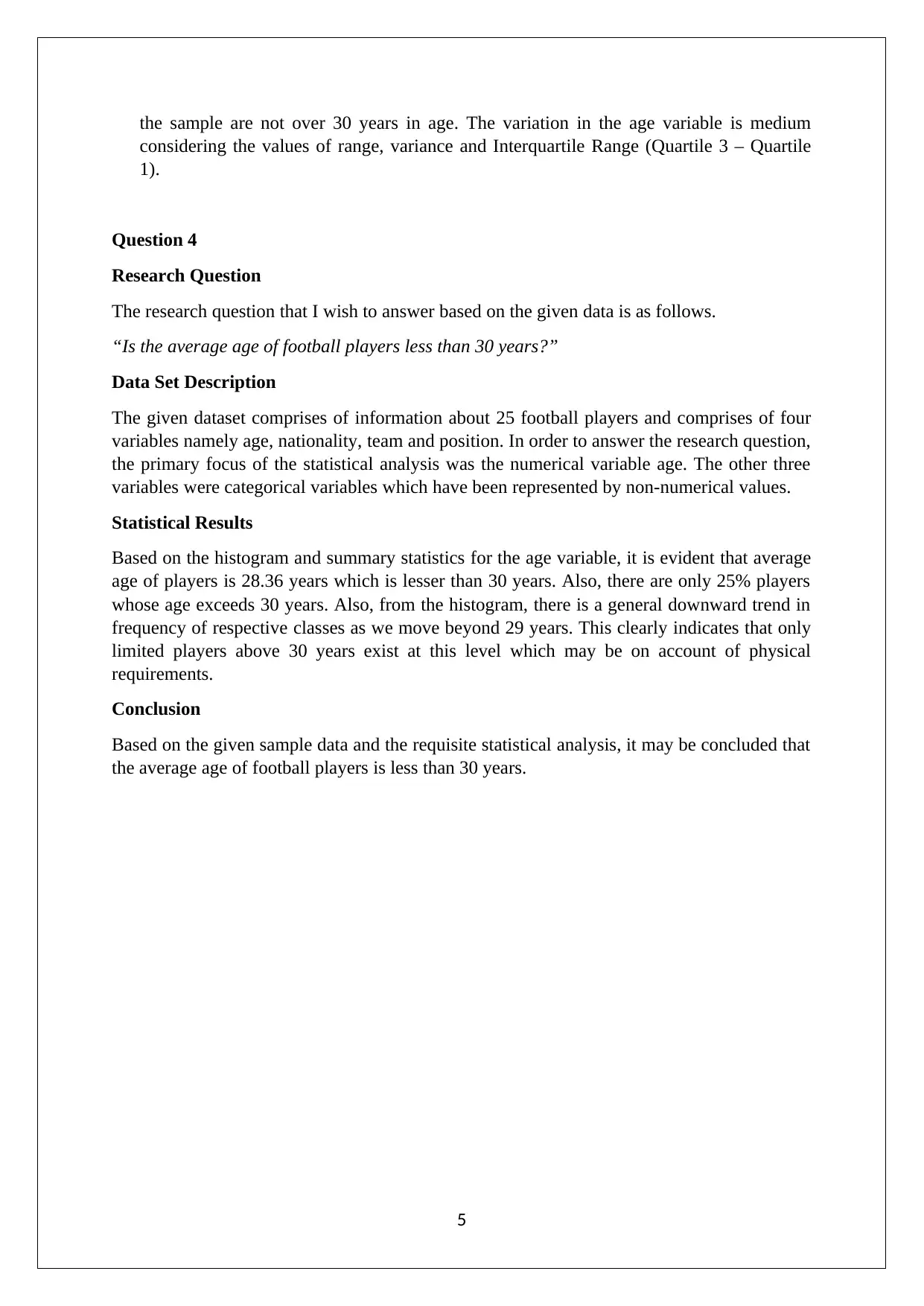Statistics for Business: Football Player Age Report Analysis
VerifiedAdded on 2022/09/26
|5
|727
|23
Report
AI Summary
This report presents a statistical analysis of football player age data. It begins by selecting appropriate graphical displays, such as column charts and pie charts, to represent categorical and numerical variables like team and age, as well as nationality. The report then delves into the analysis of the numerical variable 'Age,' employing histograms to visualize data distribution and determining class intervals using Sturges' formula. Descriptive statistics, including mean, median, and quartiles, are calculated to summarize the age variable. The research question focuses on whether the average age of football players is less than 30 years. The analysis concludes that the average age of players is indeed less than 30 years, supported by both the histogram and the summary statistics, indicating a concentration of players below this age threshold.
1 out of 5











![[object Object]](/_next/static/media/star-bottom.7253800d.svg)